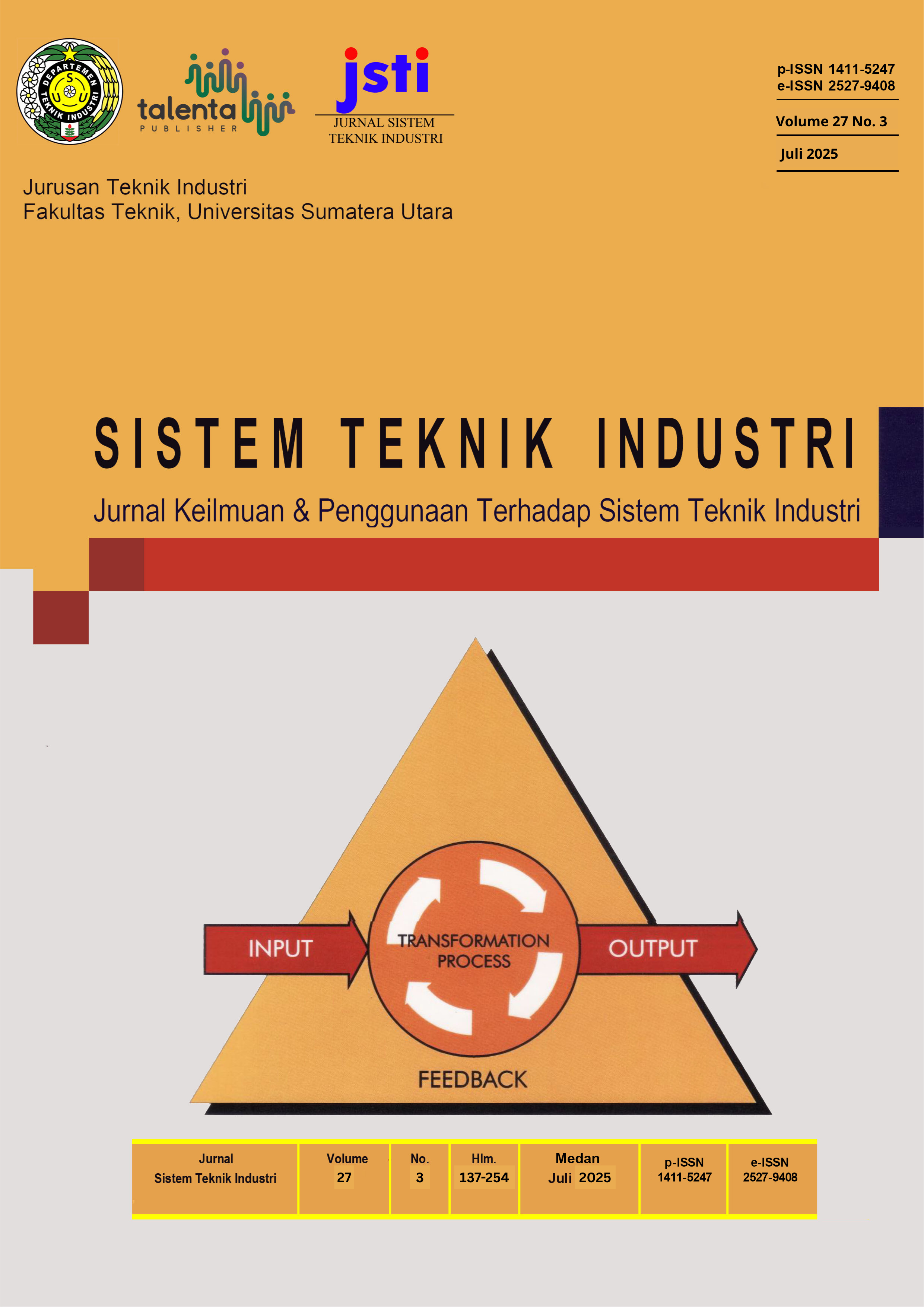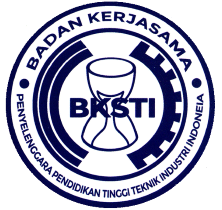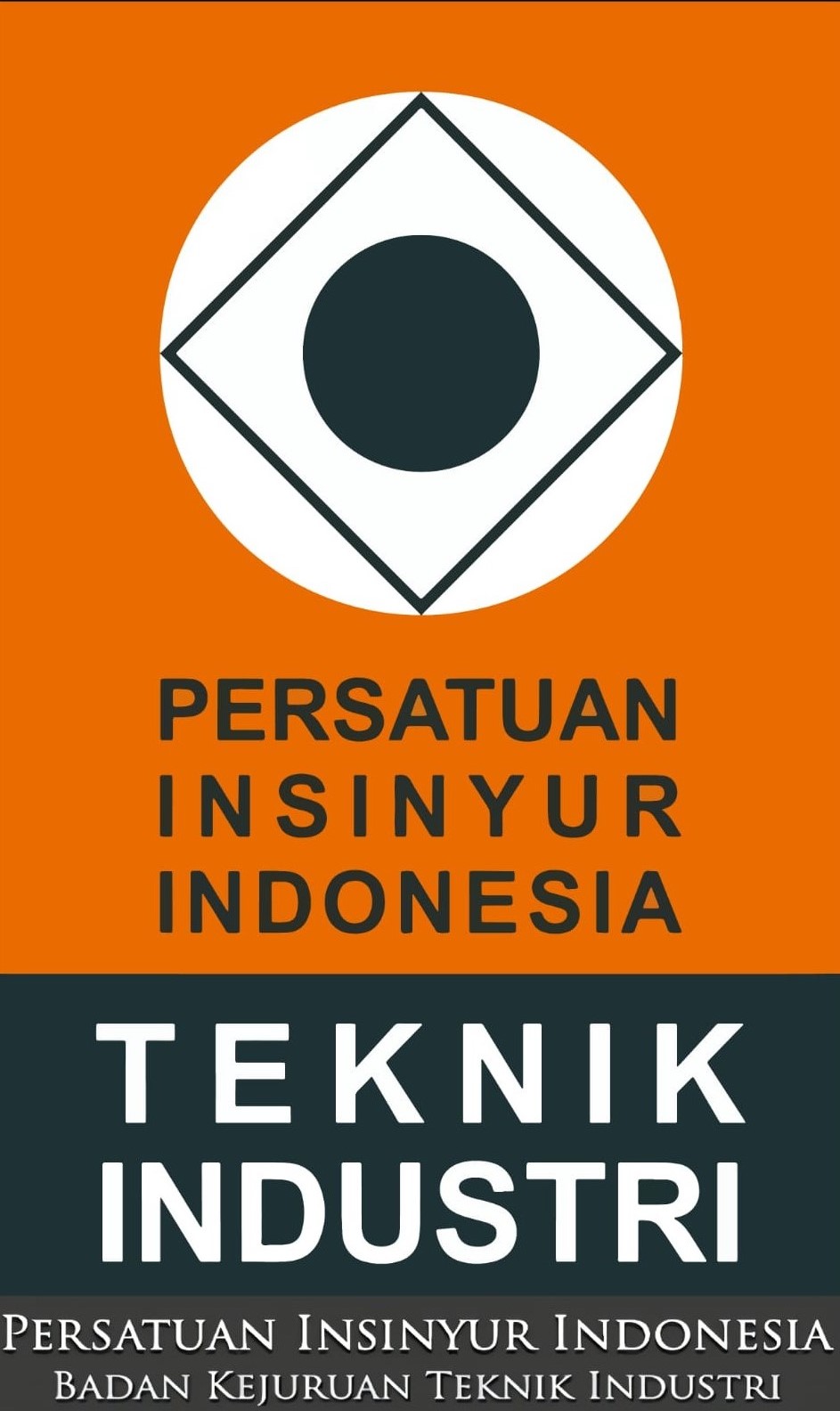Measuring Supply Chain Performance and Developing Competitive Strategy on Small Medium Enterprise Craft Industry using SCOR-AHP Model
DOI:
https://doi.org/10.32734/jsti.v27i3.20336Keywords:
Competitive Strategies, MCDM, Supply Chain Performance, SMEAbstract
Small and medium enterprises (SMEs) require support to evolve into established organizations due to their strong flexibility to change. Nonetheless, numerous obstacles confront SMEs in their efforts to develop and compete. This study seeks to evaluate supply chain performance and the formulation of competitive strategies inside small and medium-sized enterprises (SMEs). This serves as an option for assessing supply chain performance while emphasizing the formulation of competitive strategies to enhance it, encompassing the management of material, information, and financial flows from both supply and demand perspectives. The evaluation of supply chain performance is conducted with the SCOR model, which relies on the identification of Key Performance Indicators (KPIs) derived from the outcomes of the SMEs business mapping process. Subsequently, multi-criteria decision making (MCDM) employing the Analytical Hierarchy Process (AHP) is utilized to assign weights to the KPI criteria for assessing supply chain performance and guiding competitive strategy creation. The study's results identified the indicators categorized into planning, production, sourcing, delivery, and returns. The measurement of supply chain performance suggests that the case study industry has a value of 84.11, signifying commendable performance. Moreover, competitive strategies, using Kraljic Matrix, Six Sigma, Lean Method, or mixed strategies, have been suggested to enhance supply chain performance and business competition, informed by the outcomes of the SCOR model and the MCDM approach.
Downloads
References
A. Irawan and K. Sukiyono, “the Role of Small and Medium Enterprises (SME) on the Economy,” International Journal of Social Science, vol. 1, no. 4, pp. 467–472, 2021.
A. T. Ratnawati and S. Darmanto, “The effect of entrepreneurial orientation and dynamic capability on business performance in creative industry: Mediating role of innovativeness product advantage,” Global Business & Finance Review (GBFR), vol. 28, no. 2, pp. 17–33, 2023.
M. Widyastuti and Y. B. Hermanto, “The effect of financial literacy and social media on micro capital through financial technology in the creative industry sector in East Java,” Cogent Economics & Finance, vol. 10, no. 1, p. 2087647, Dec. 2022, doi: 10.1080/23322039.2022.2087647.
P. Burawat, “Improvement of Productivity by Using Means of Lean Manufacturing, Just in Time, and Production Technology in Thai SMEs Manufacturing Industry,” DESIGN, CONSTRUCTION, MAINTENANCE, vol. 4, 2024, Accessed: Mar. 27, 2025. [Online]. Available: https://wseas.com/journals/dcm/2024/a225107-2844.pdf
Q. Qurtubi, R. Yanti, and M. F. Maghfiroh, “Supply chain performance measurement on small medium enterprise garment industry: application of supply chain operation reference,” Jurnal Sistem Dan Manajemen Industri, vol. 6, no. 1, pp. 14–22, 2022.
J. C. Quiroz-Flores, D. S. Canales-Huaman, and K. G. Gamio-Valdivia, “Integrated Lean Logistics - Warehousing model to reduce Lead Time in an SME of food sector: A research in Peru,” in 2022 The 3rd International Conference on Industrial Engineering and Industrial Management, Barcelona Spain: ACM, Jan. 2022, pp. 182–188. doi: 10.1145/3524338.3524366.
B. M. Kimwaki, “Supply Chain Performance in the Manufacturing Sector: The Role of Lead-Time Management Strategies,” Journal Integration of Social Studies and Business Development, vol. 2, no. 1, pp. 1–12, 2024.
F. Trapsilawati, Subagyo, D. A. Firmansyah, N. A. Masruroh, I. G. B. B. Dharma, and B. S. Wibowo, “Concurrent product-process-supply chain strategy formulation for small medium enterprises,” Concurrent Engineering, vol. 30, no. 4, pp. 411–423, Dec. 2022, doi: 10.1177/1063293X221118356.
Y. Lazrak and A. E. I. Tissafi, “Cocreating Sustainability in the Circular Supply Chain: A Qualitative Exploration among Moroccan SMEs,” in 2024 IEEE 15th International Colloquium on Logistics and Supply Chain Management (LOGISTIQUA), IEEE, 2024, pp. 1–6. Accessed: Jun. 23, 2025. [Online]. Available: https://ieeexplore.ieee.org/abstract/document/10571473/
T. Sudan and R. Taggar, “Assessing trade supply chain vulnerability and trade participation of SMEs in India: insights from a comprehensive analysis,” International Journal of Productivity and Performance Management, vol. 74, no. 1, pp. 250–303, 2025.
H. B. Babalola, M. K. I. A. Rahim, and S. Omar, “Environmental factors and adoption of green supply chain management among SMEs in Nigeria: Moderating role of environmental uncertainty,” International Journal of Energy Economics and Policy, vol. 14, no. 1, pp. 640–650, 2024.
J. Ploenhad, P. Laoprawatchai, C. Thongrawd, and K. Jermsittiparsert, “Mediating role of competitive advantage on the relationship of supply chain management and organizational performance on the food industry of Thailand,” International Journal of Supply Chain Management, vol. 8, no. 4, pp. 216–226, 2019.
R. Bhagwat and M. K. Sharma, “Performance measurement of supply chain management: A balanced scorecard approach,” Computers & industrial engineering, vol. 53, no. 1, pp. 43–62, 2007.
Y. N. Afifa and I. Santoso, “Risk analysis and mitigation using Scor-Fuzzy ANP,” Indian J. Sci. Technol, vol. 11, pp. 1–13, 2018.
E. Lhassan, R. Ali, and F. Majda, “Combining SCOR and BPMN to support supply chain decision-making of the pharmaceutical wholesaler-distributors,” in 2018 4th International Conference on Logistics Operations Management (GOL), IEEE, 2018, pp. 1–10. Accessed: Mar. 27, 2025. [Online]. Available: https://ieeexplore.ieee.org/abstract/document/8378078/
Downloads
Published
How to Cite
Issue
Section
License
Copyright (c) 2025 TALENTA Publisher Universitas Sumatera Utara

This work is licensed under a Creative Commons Attribution-ShareAlike 4.0 International License.
The Authors submitting a manuscript do so on the understanding that if accepted for publication, the copyright of the article shall be assigned to TALENTA Publisher Universitas Sumatera Utara as the publisher of the journal.
Copyright encompasses the rights to reproduce and deliver the article in all forms and media. The reproduction of any part of this journal, its storage in databases, and its transmission by any form or medium will be allowed.



















